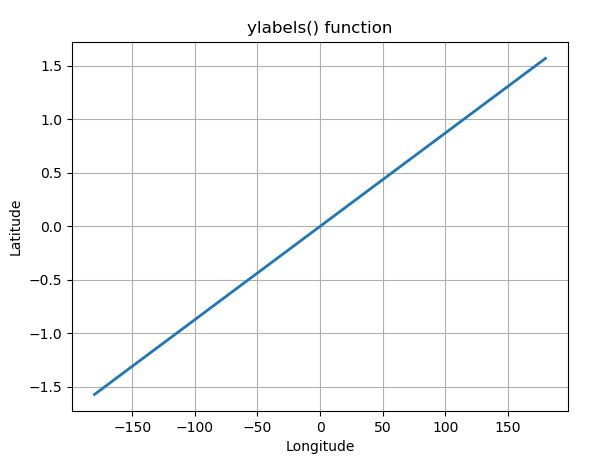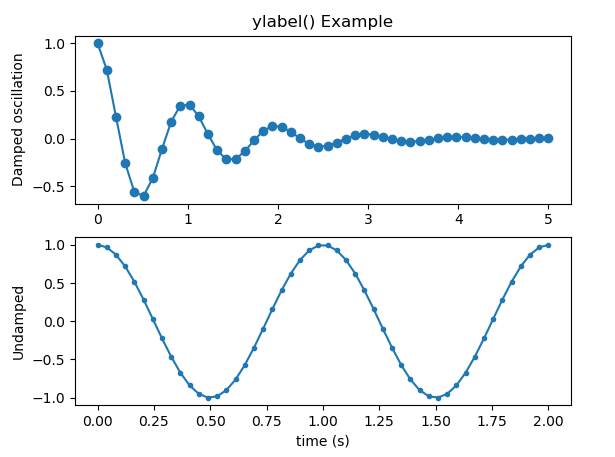Matplotlib.pyplot.ylabels () в Python
Matplotlib - это библиотека на Python, которая является численно-математическим расширением библиотеки NumPy. Pyplot - это интерфейс на основе состояний для модуля Matplotlib, который предоставляет интерфейс, подобный MATLAB.
Функция matplotlib.pyplot.ylabel ()
Функция ylabel () в модуле pyplot библиотеки matplotlib используется для установки метки для оси x.
Syntax: matplotlib.pyplot.ylabel(ylabel, fontdict=None, labelpad=None, **kwargs)
Parameters: This method accept the following parameters that are described below:
- ylabel: This parameter is the label text. And contains the string value.
- labelpad: This parameter is used for spacing in points from the axes bounding box including ticks and tick labels and its default value is None.
- **kwargs: This parameter is Text properties that is used to control the appearance of the labels.
Примеры ниже иллюстрируют функцию matplotlib.pyplot.ylabel () в matplotlib.pyplot:
Example #1:
# Implementation of matplotlib.pyplot.ylabels() # function import numpy as npimport matplotlib.pyplot as plt t = np.arange(-180.0, 180.0, 0.1)s = np.radians(t)/2. plt.plot(t, s, "-", lw = 2) plt.xlabel("Longitude")plt.ylabel("Latitude")plt.title("ylabels() function")plt.grid(True) plt.show() |
Выход:
Example #2:
# Implementation of matplotlib.pyplot.ylabels() # function import numpy as npimport matplotlib.pyplot as plt valx1 = np.linspace(0.0, 5.0)x2 = np.linspace(0.0, 2.0) valy1 = np.cos(2 * np.pi * valx1) * np.exp(-valx1)y2 = np.cos(2 * np.pi * x2) plt.subplot(2, 1, 1)plt.plot(valx1, valy1, "o-")plt.title("ylabel() Example")plt.ylabel("Damped oscillation") plt.subplot(2, 1, 2)plt.plot(x2, y2, ".-")plt.xlabel("time (s)")plt.ylabel("Undamped") plt.show() |
Выход:
Внимание компьютерщик! Укрепите свои основы с помощью базового курса программирования Python и изучите основы.
Для начала подготовьтесь к собеседованию. Расширьте свои концепции структур данных с помощью курса Python DS. А чтобы начать свое путешествие по машинному обучению, присоединяйтесь к курсу Машинное обучение - базовый уровень.